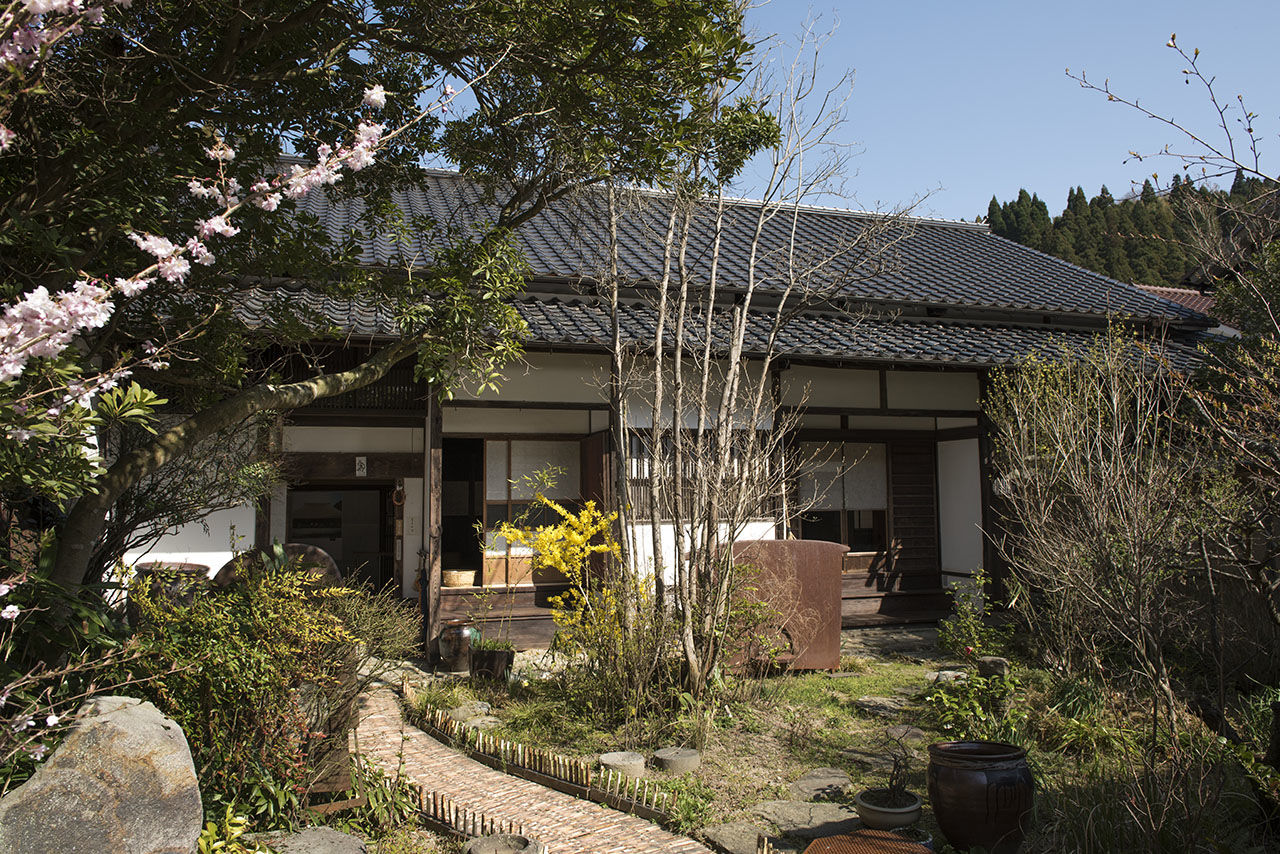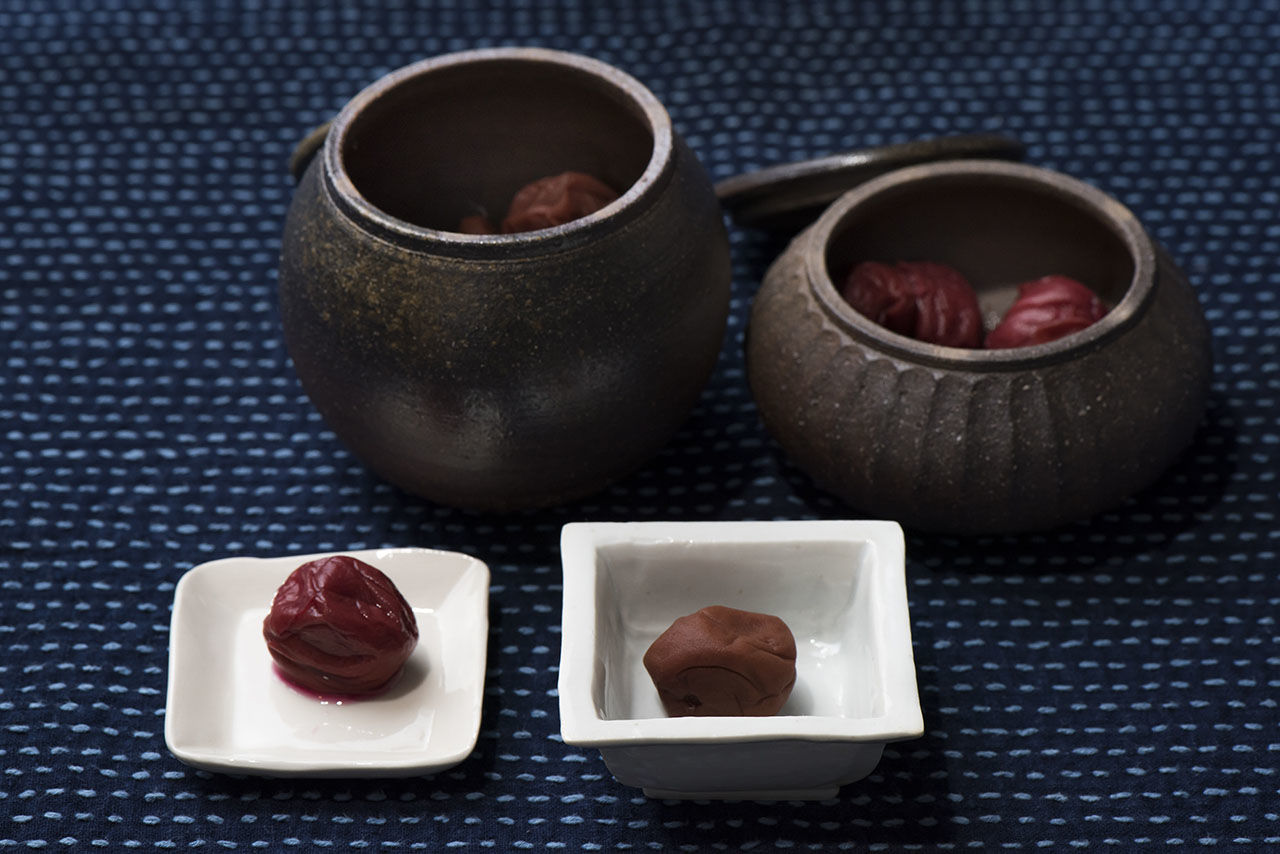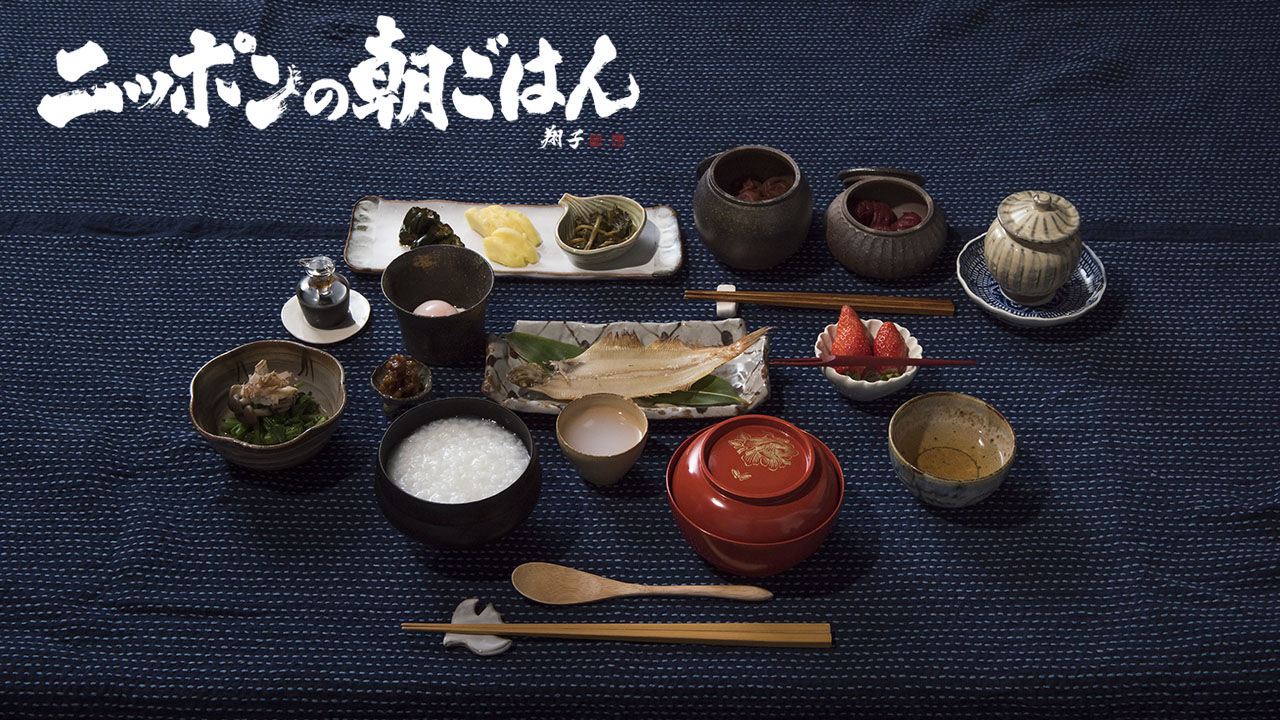
Breakfast Around Japan: A Culinary Adventure
Breakfast at Country Inn “Takyō Abeke”: Historic Shimane Town Offers Homespun Hospitality
Guideto Japan
Food and Drink Travel Lifestyle- English
- 日本語
- 简体字
- 繁體字
- Français
- Español
- العربية
- Русский
Menu
- Umeboshi
- Soused mixed vegetables in season
- Grilled dried flounder (sasa-garei)
- Coddled egg (on-tamago)
- Chirimen jako (dried baby sardines) with sansho pepper
- Kinzanji miso with yuzu
- Tōfu noodles in broth
- Rice gruel
- Omoyu (rice water)
- Three-pickle assortment
- Fresh fruit
- Kōka-cha
Iwami Ginzan in Ōda, Shimane Prefecture, is one of Japan’s best kept secrets. From the city of Izumo (home to one of Japan’s most ancient shrines), you proceed southwest, skirting the Sea of Japan coast, then head inland into the forested hills. There, nestled in a narrow valley, lies the beautiful old town of Ōmori, a nationally designated district for the preservation of historic buildings and part of a UNESCO World Heritage site centered on the old Iwami Ginzan silver mine.
Among the traditional wood buildings lining the town’s picturesque main street is Takyō Abeke, a Japanese country inn in a magnificent old samurai residence. Takyō means “home away from home,” and Abeke takes that concept to heart, reviving the homespun hospitality of provincial living in a bygone era. What you hear upon entering the inn, with its earthen-floored entryway, is not the conventional greeting of “Irasshaimase!” but an expression more commonly used to welcome family members back home: “Okaerinasai!”
Takyō Abeke is a unique yet harmonious blend of rustic simplicity and luxurious hospitality. The old Abe house (Abeke), erected in 1789, was originally built for Abe Seibei, a samurai-official appointed to help administer the nearby silver mine. The house itself is a hybrid, combining farmhouse architecture with the grandeur of a buke-yashiki (high-ranking samurai’s residence), one spacious tatami room opening onto another and another and another.
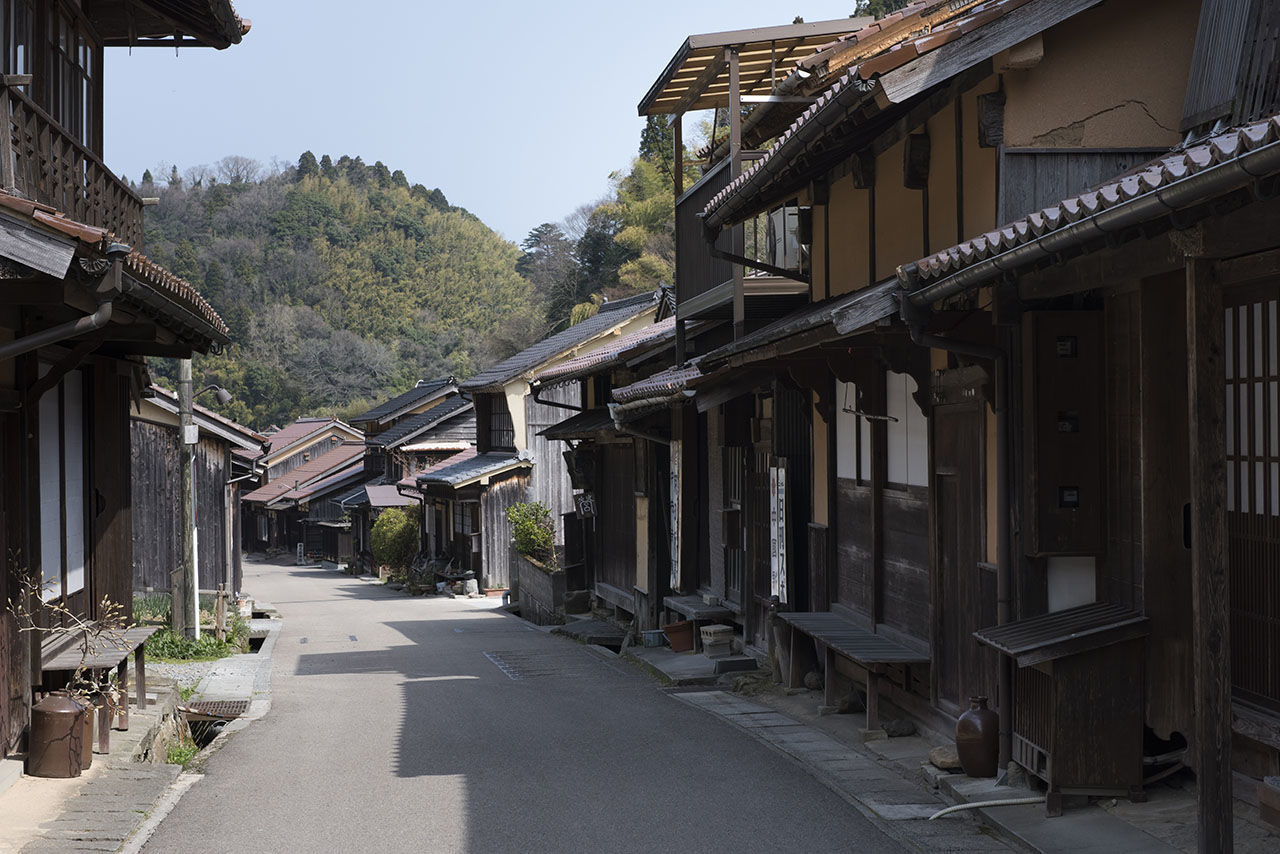 The buildings that line the street have been there since the Edo period (1603–1868).
The buildings that line the street have been there since the Edo period (1603–1868).
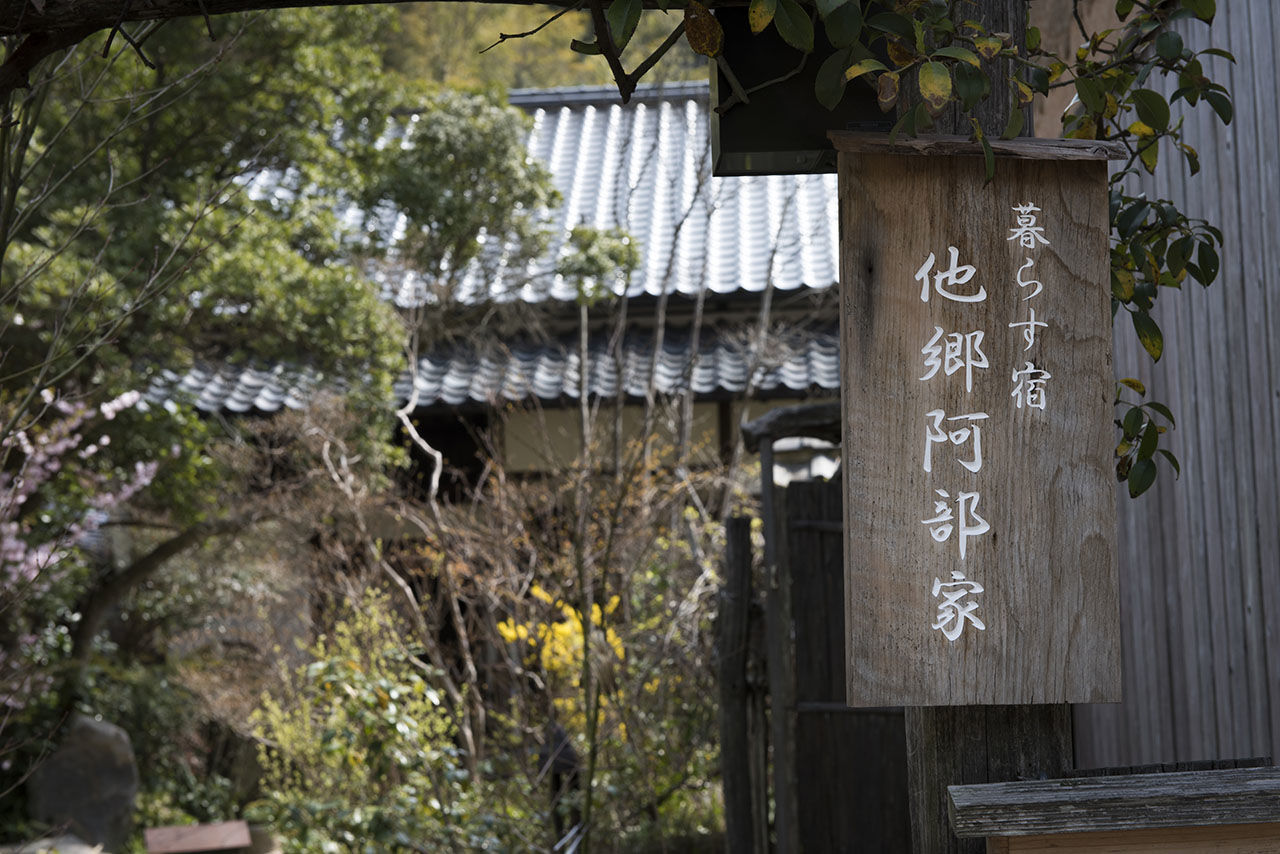 A rustic sign identifies Takyō Abeke as a kurasu yado, or “domestic living inn.”
A rustic sign identifies Takyō Abeke as a kurasu yado, or “domestic living inn.”
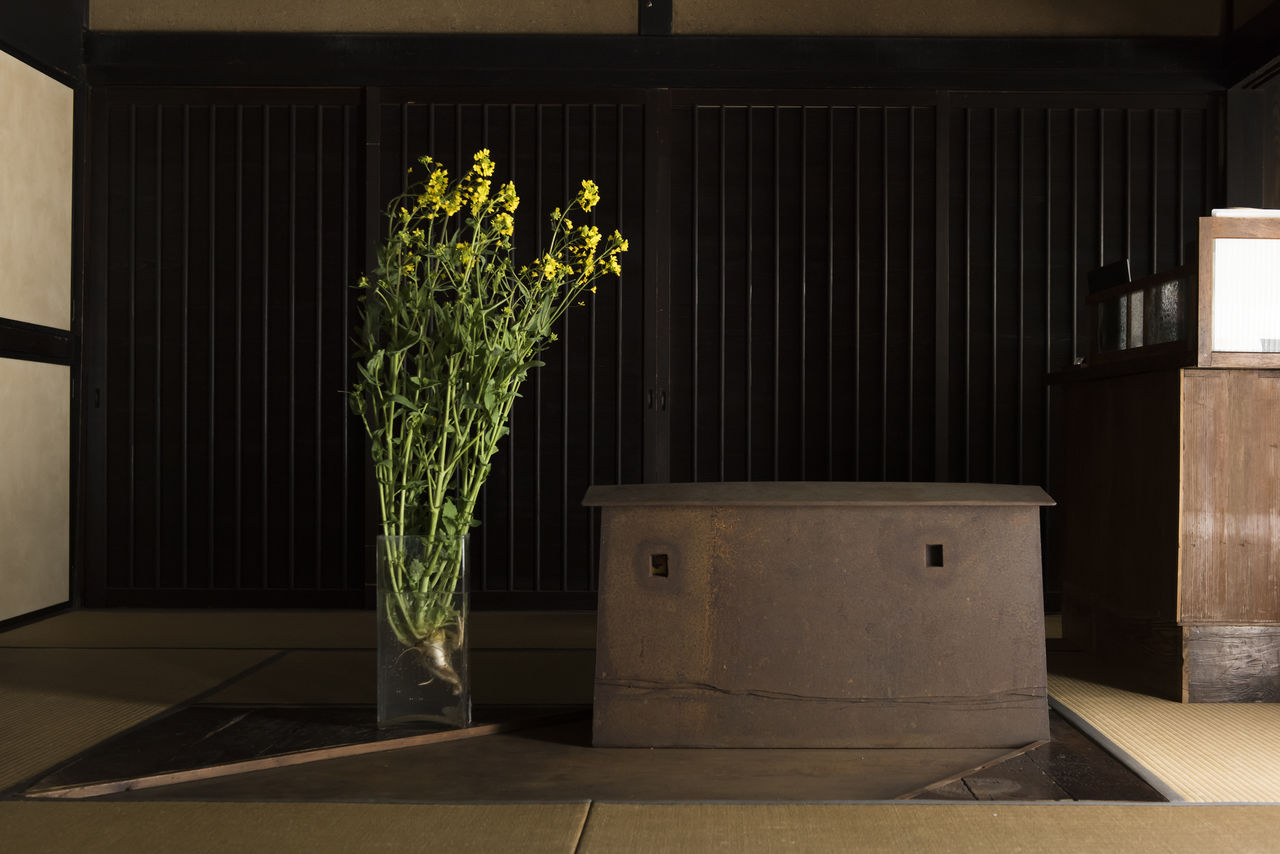 Blossoming rapeseed stalks bring a breath of spring into the reception room off the entryway.
Blossoming rapeseed stalks bring a breath of spring into the reception room off the entryway.
The Abe house was designated a historic site by Shimane Prefecture back in 1975, but for many years it lay empty and neglected, as the town’s population dwindled and the local economy declined. Matsuba Tomi, who ran a successful apparel business headquartered in Ōmori, bought the house in 1998 and spent a decade painstakingly restoring it and transforming it into a country inn offering old-fashioned homestyle food and accommodations.
Born and raised in Mie Prefecture, Matsuba spent years as a Nagoya urbanite before moving to Ōmori, her husband’s hometown, in 1981. Since then, she has made it her mission to help restore and revitalize her adoptive home in the spirit of fukko sōshin, creating new value while restoring the old.
A major focus of Matsuba’s work on the Abe house was the kitchen. From the outset, she had her heart set on a traditional Japanese kitchen-dining area with an old-style wood-burning kamado stove. She loves lighting the fire, cooking rice the old-fashioned way, and sharing a home-cooked meal with visitors who converge on the big kitchen table from near and far. At night, she molds fresh-cooked rice into musubi rice balls; in the morning, she serves up steaming-hot bowls of fragrant rice gruel. The shyness and reserve of strangers seems to melt away amid the warmth of the crackling fire, and before you know it, the kitchen is ringing with lively conversation.
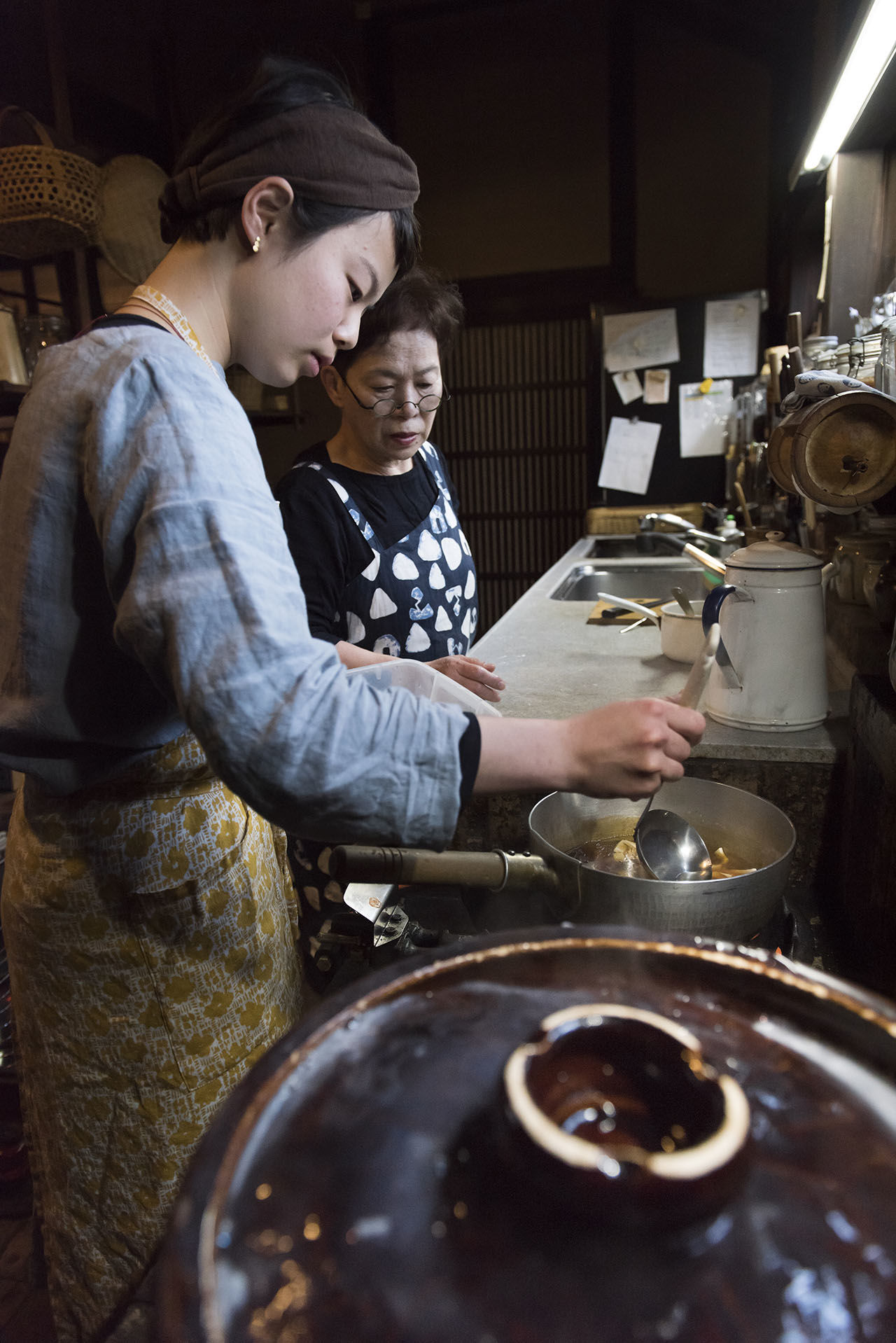 Matsushima Amane (foreground) prepares breakfast under Matsuba’s watchful gaze.
Matsushima Amane (foreground) prepares breakfast under Matsuba’s watchful gaze.
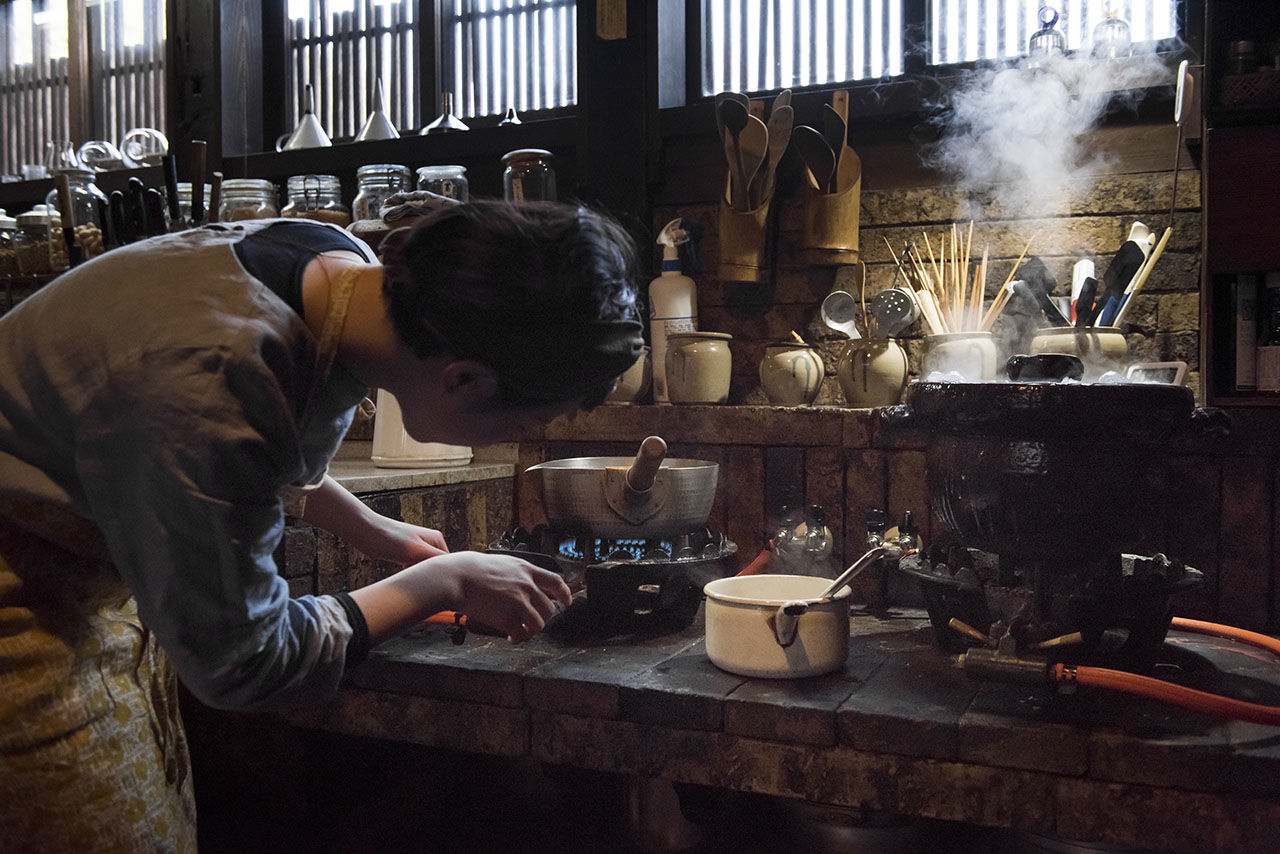 With experience, she learns how to adjust the flame and add water as needed.
With experience, she learns how to adjust the flame and add water as needed.
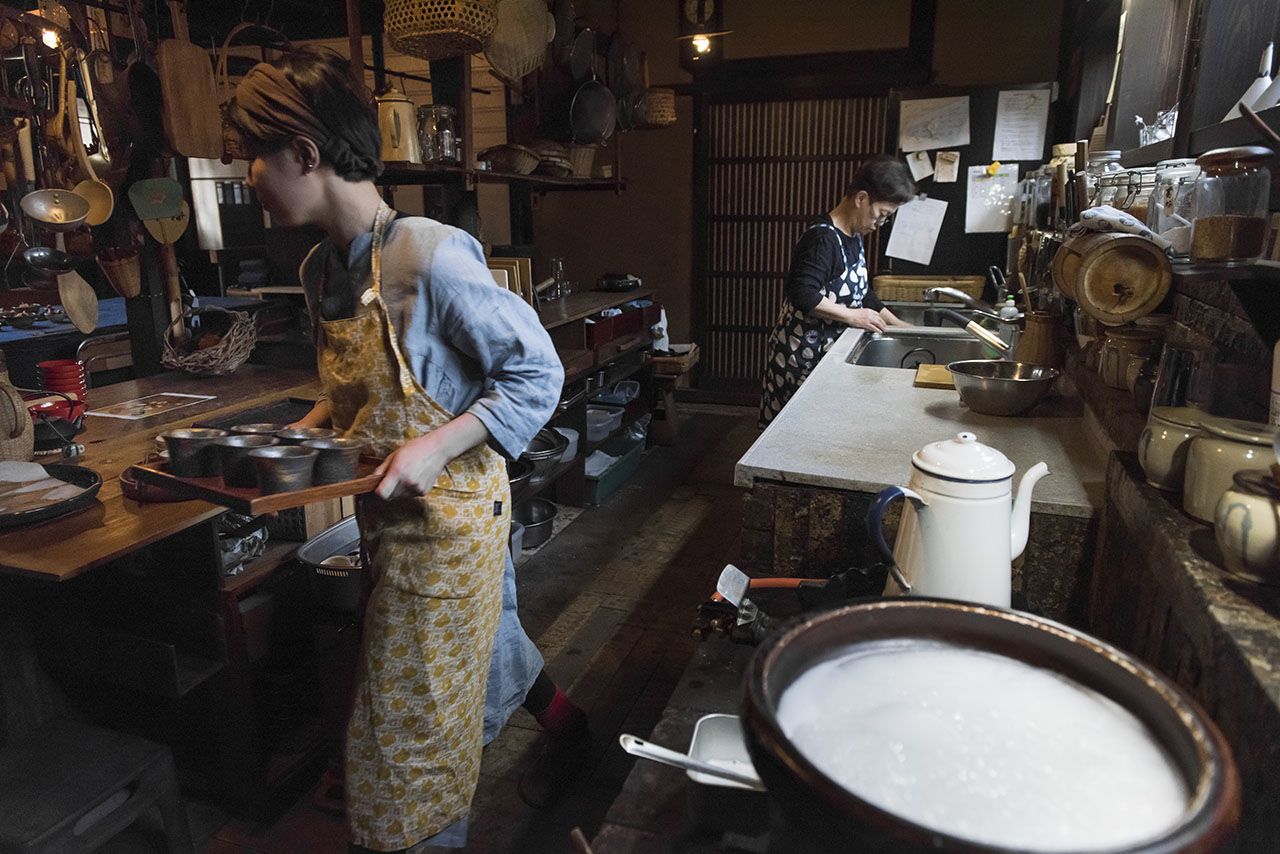 The kitchen is a whirlwind of activity . . .
The kitchen is a whirlwind of activity . . .
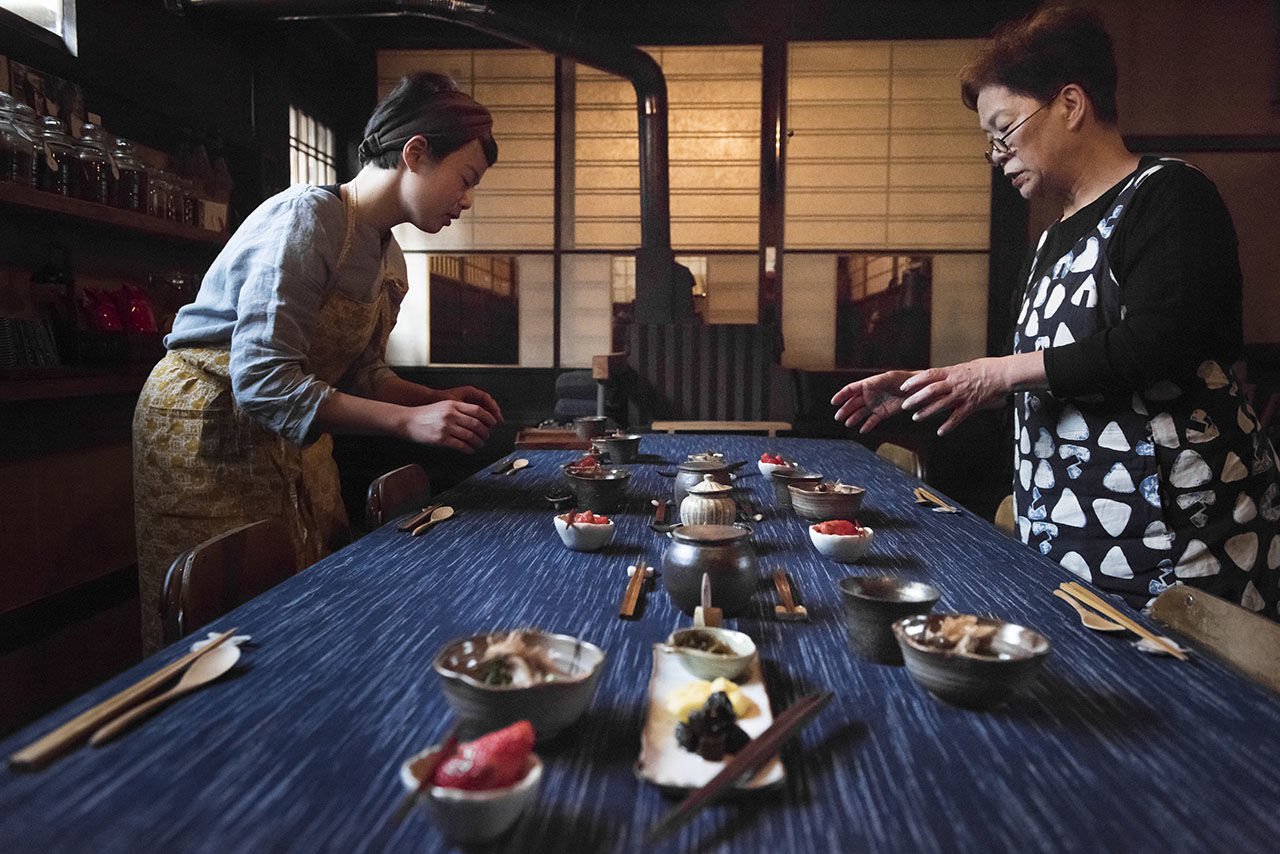 . . . as the morning meal takes shape.
. . . as the morning meal takes shape.
Like the inn itself, breakfast at Takyō Abeke marries homespun simplicity with luxurious hospitality. Our morning meal consisted of the following.
Umeboshi (two types)
Five-year umeboshi and Ochinai Daikichi, made from a special variety of plum.
Soused mixed vegetables in season (two types)
Nanohana (budding rapeseed) with spinach and bok choy with oyster mushrooms.
Grilled dried flounder (sasa-garei)
Semi-dried fish is a popular breakfast item at Japanese inns. These flounder, caught nearby in the Sea of Japan and dried overnight, hit the spot with their intense yet refined umami. The dried flounder are called sasa-garei because of their resemblance to bamboo leaves, like the one on which this fish is served.
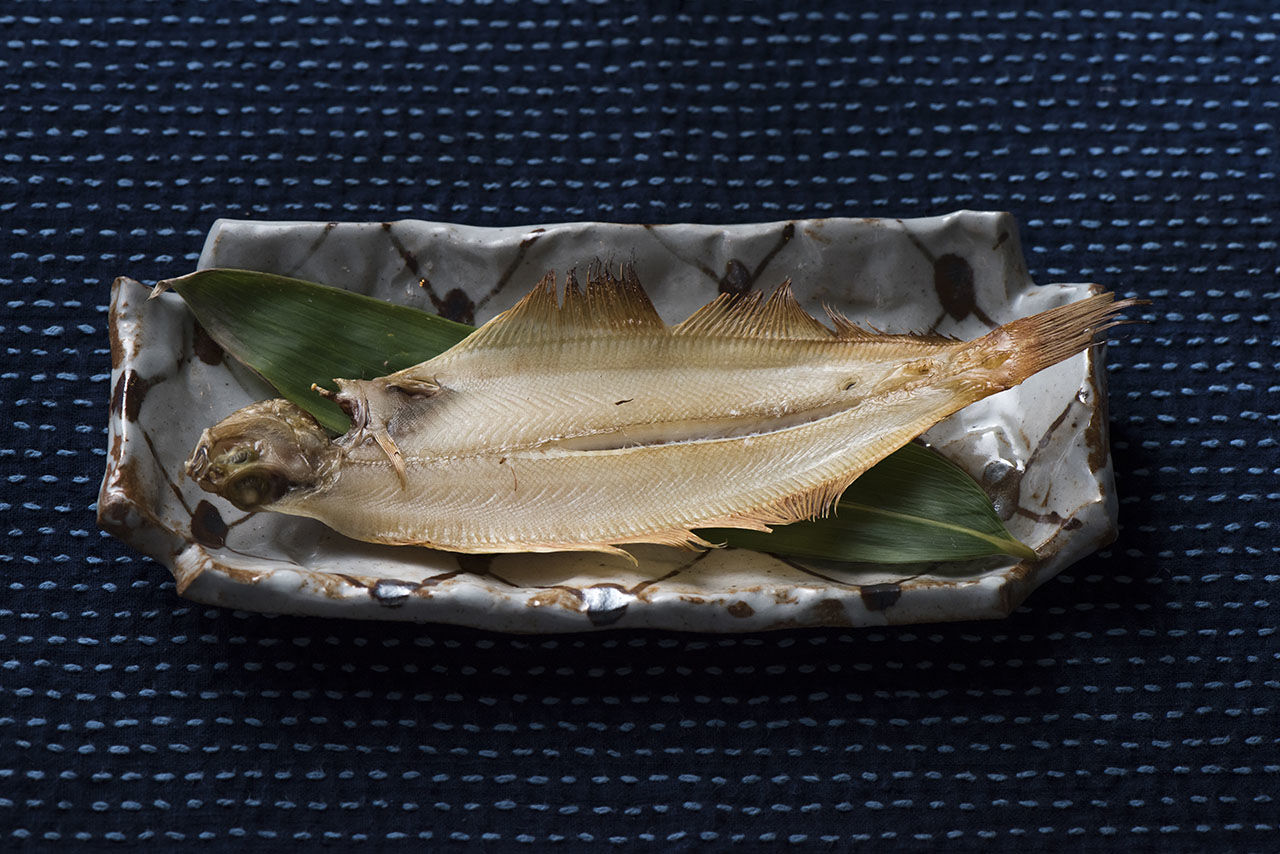 The flounder is caught in nearby coastal waters and air-dried overnight.
The flounder is caught in nearby coastal waters and air-dried overnight.
Coddled egg (on-tamago)
The eggs are from locally raised free-range chickens.
Chirimen jako (dried baby sardines) with sansho pepper
These tiny dried fish are flavored with tangy, aromatic sansho peppercorns, the immature fruit of sansho trees grown in the Izumo region.
Kinzanji miso with yuzu
Yuzu rind adds a zesty note to this sweet-tasting fermented condiment.
Tōfu noodles in broth
“Udon tōfu” is a local specialty going back to the Edo period (1603–1868). Firm tōfu is pressed to remove excess moisture, cut in the shape of udon noodles, and served in a bowls with broth.
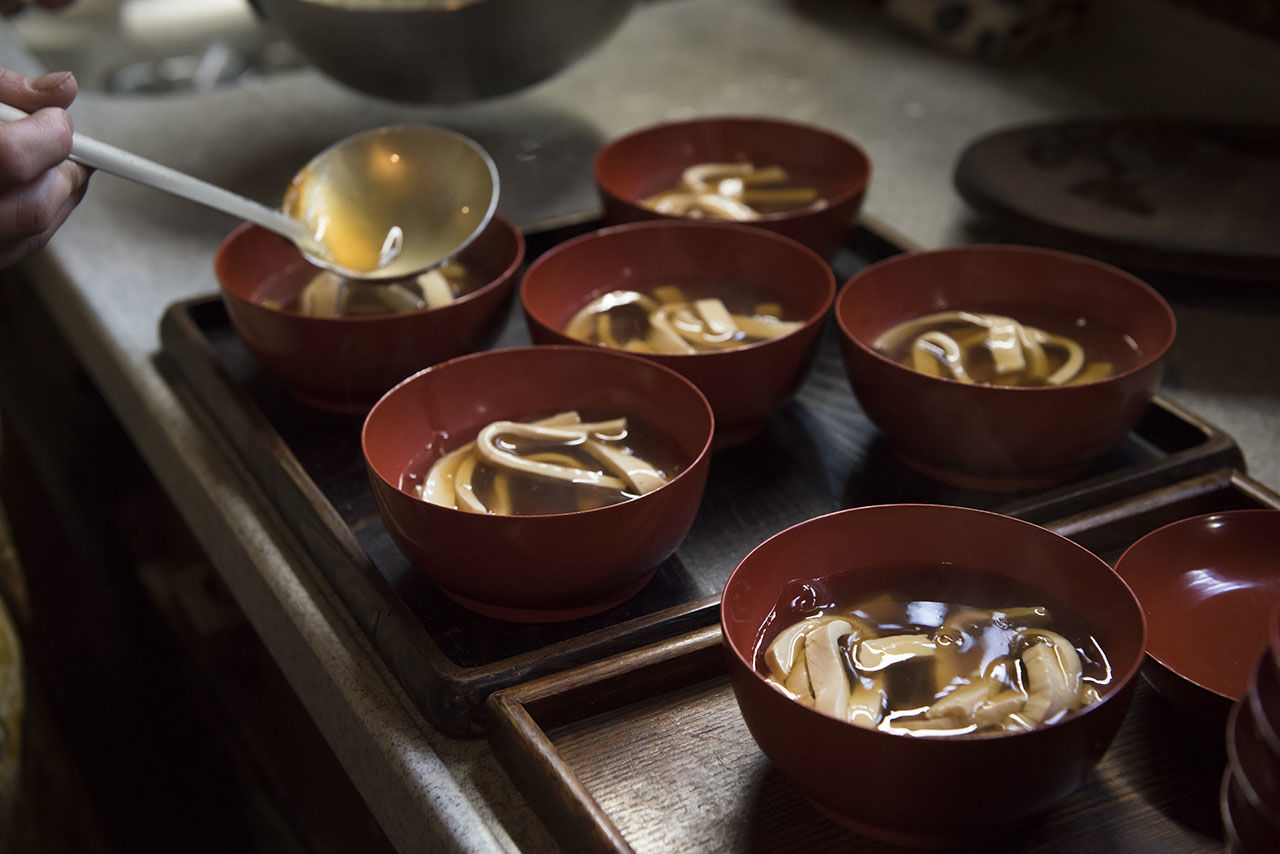 Tōfu noodles, a local specialty.
Tōfu noodles, a local specialty.
Rice gruel
Takyō Abeke uses Izumo Kamimusubi rice grown in the Musubi district of Izumo, an area famed since ancient times for its fertile soil and clear water. The variety, while low in yield, is ranked with the better-known Koshihikari in quality.
Omoyu (rice water)
The thick, starchy water skimmed off the top of a bubbling pot of rice gruel is fragrant, nutritious, and highly digestible.
Three-pickle assortment
Pickled wasabi greens, cucumber pickled in soy sauce (both made in-house) and a neighbor’s special takuan (dried daikon radish fermented in kōji).
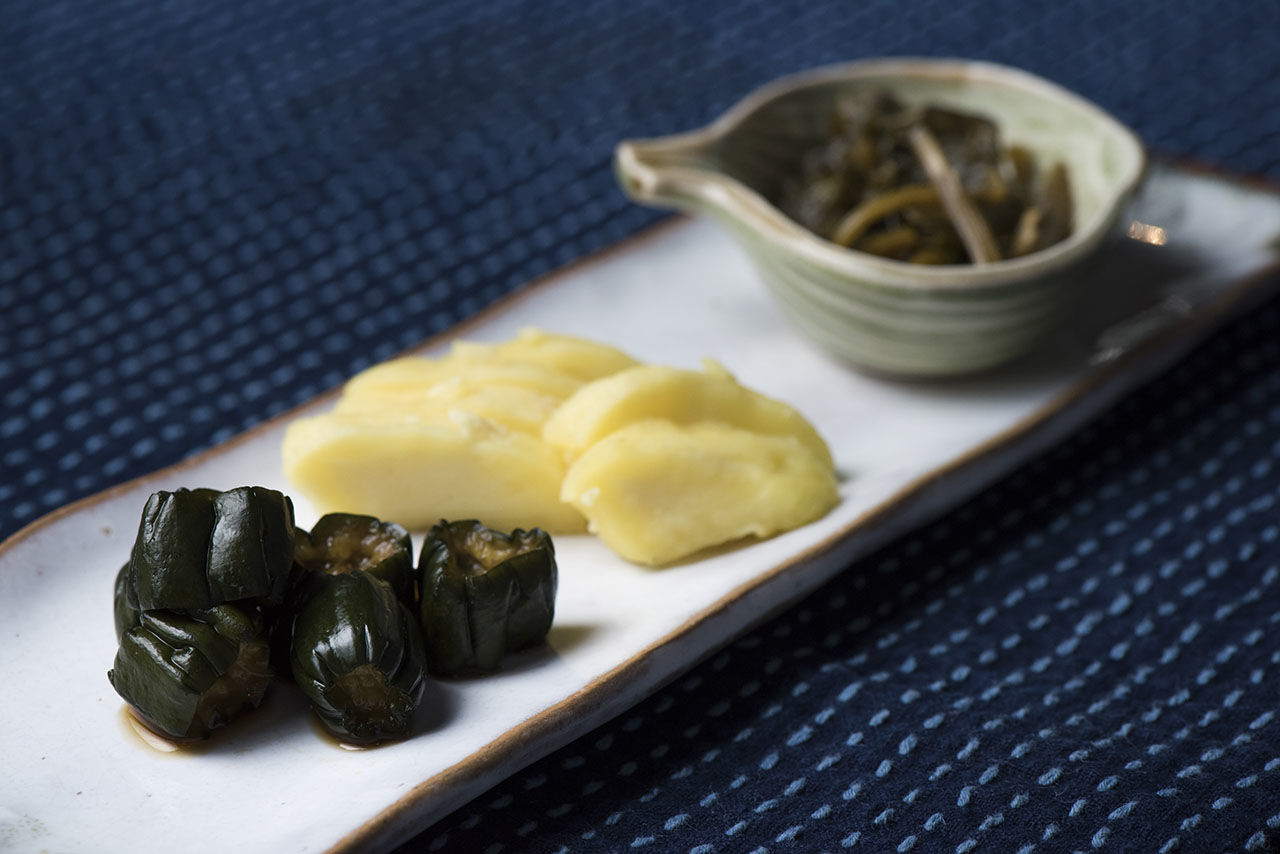 Cucumber pickled in soy sauce, takuan, and pickled wasabi greens.
Cucumber pickled in soy sauce, takuan, and pickled wasabi greens.
Fresh fruit
“Kaori” strawberries produced locally in Ōda.
Kōka-cha
Kōka-cha is the local name for tea brewed from kawaraketsumei (hama-cha), a wild herb common in this part of Japan.
Takyō Abeke
Address: 159-1 Ha, Ōmori-chō, Ōda, 694-0305, Shimane Prefecture
Phone: +81-(0)854-89-0022
Website: http://www.takyo-abeke.jp/english/
(Originally written in Japanese. Photos by Kusumoto Ryō. Series title written by Kanazawa Shōko.)
tourism World Heritage food Washoku cuisine Breakfast Around Japan: A Culinary Adventure Iwami Ginzan San'in Chūgoku
